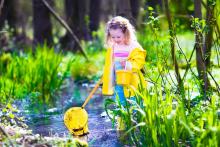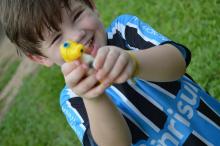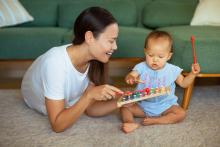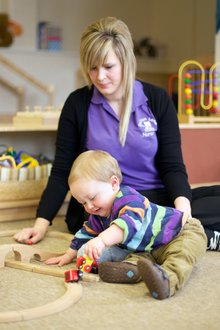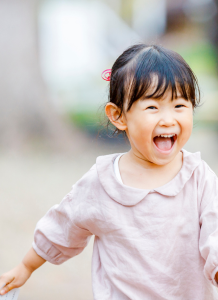Alliance quality and standards manager Melanie Pilcher explores the breadth of creativity, its application across the EYFS and how to inspire it in under-fives
The dictionary describes creativity as “the ability to produce original and unusual ideas, or to make something new or imaginative”. It is a brief explanation of a big concept – so if we want to support children’s creativity, we should take the time to reflect on what it means to us.
One of the first times that parents and carers recognise a young child’s creativity usually follows a near-miss: the young baby who’s never been able to roll over and reach the dog’s tail works out how to coordinate their limbs to achieve their goal; the toddler who can’t reach the open window manoeuvres a large push-along toy to the wall and is able to stand on it. These are behaviours we may describe as clever, cunning, or even ‘naughty’, when they’re simply a child flexing their creative abilities as they innovate, problem solve and think critically.
In the Early Years Foundation Stage, creativity sits within the educational programme for expressive arts and design, which states that “the development of children’s artistic and cultural awareness supports their imagination and creativity”. Meanwhile, ‘creative’ and critical thinking is a characteristic of effective learning that describes the behaviours children use to learn.
In fact, creativity is fundamental to every area of development – not just expressive arts and design. For example, children who are encouraged to play creatively with numbers and patterns are establishing important mathematical skills and demonstrating the characteristics of effective learning.
What do children need to be creative?
It’s not all about targeted resources, children are equipped with creative brains that they use to discover new and original ideas, make connections, and find solutions. Children are driven to be creative even in an empty room, whether they are using their imagination, making their own sounds, or mark-making on a dusty ledge or misted window. Creativity will always find a way; it’s part of our drive as humans towards what Maslow describes as self-actualisation – the realisation of a person’s potential and self-fulfilment. Here are some essentials:
Time
When children are truly engrossed in their play they need, whenever possible, to be able to conclude it for themselves so that creative trains of thought are not interrupted. Educators understand what children need to know and learn but must be able to tune into the learning that is happening when children are being creative. For example, a child may have learned to comply by sitting still long enough to listen to a story but learns far more from the playful activity they have been steered away from.
Opportunity
Children need the freedom to be creative, to take risks and to find their own ways of doing things. When their day is over-planned, it removes the opportunity for spontaneity and for learning that happens ‘in the moment’.
Self-belief
How many times do we hear adults admire somebody else’s work, then say “but I don’t have a creative bone in my body”? At what point do we lose self-belief in our creative abilities? Could it be the times when, as children, others decided what was of value or what merited praise?
Creativity is not something that grown-ups define on children’s behalf. Creativity is self-discovery, exploration, success, and failure that equips children with the tools they need to be lifelong learners.
Process over product
Linking closely to self-belief, we must let children enjoy the process of being creative – to believe in what they’re doing and not worry about somebody else’s predetermined outcome. For example, being asked to replicate an adult’s version of a spring flower by sticking pre-cut tissue paper onto a template stifles a child’s creativity and imagination. Children are more likely to be disappointed that they have not achieved ‘your’ outcome, instead of delighting in creating something they have enjoyed doing.
How does the environment support creativity?
Birth to 5 Matters describes enabling environments as those that offer “open-ended play opportunities allowing imagination and creativity to flourish, with children exploring their own ideas, theories as all areas of learning are unlocked rather than specific intended learning outcomes”. The environment should be interesting and stimulating with plenty of open-ended resources that challenge children to be creative. Further guidance can be found here: bit.ly/creativity-in-EY
Educators should also tap into the benefits of time spent outdoors where nature is the master of creativity, from tiny spiders that create the most intriguing webs, to glorious foliage on plants and trees that create nature’s own art display.
How do adults support the creativity of under-fives?
Sometimes, we curb a child’s creativity by taking over or diverting a line of enquiry that the child is pursuing. Adult-planned activities are important, but they must build on what motivates a child in the first place if they are to encourage creative and critical thinking. Children are creative because it comes from within them, not because we think they should be.
We should:
-
give children plenty of opportunity for play that arises from their ideas, make sure that play is stimulated by educators/parents/carers, not controlled by them.
-
select and use resources that encourage children to use their imagination.
-
keep resources exciting by changing them often or changing their location from time to time.
-
encourage children to come up with innovative ways to use familiar items or equipment.
-
be open to children’s ideas, give them time to express themselves and to work through their thoughts.
-
always prioritise the creative process, not the product.
-
give children with special educational needs or disabilities independence and control whenever possible.
-
be supportive of children’s creative efforts.
You might like...



